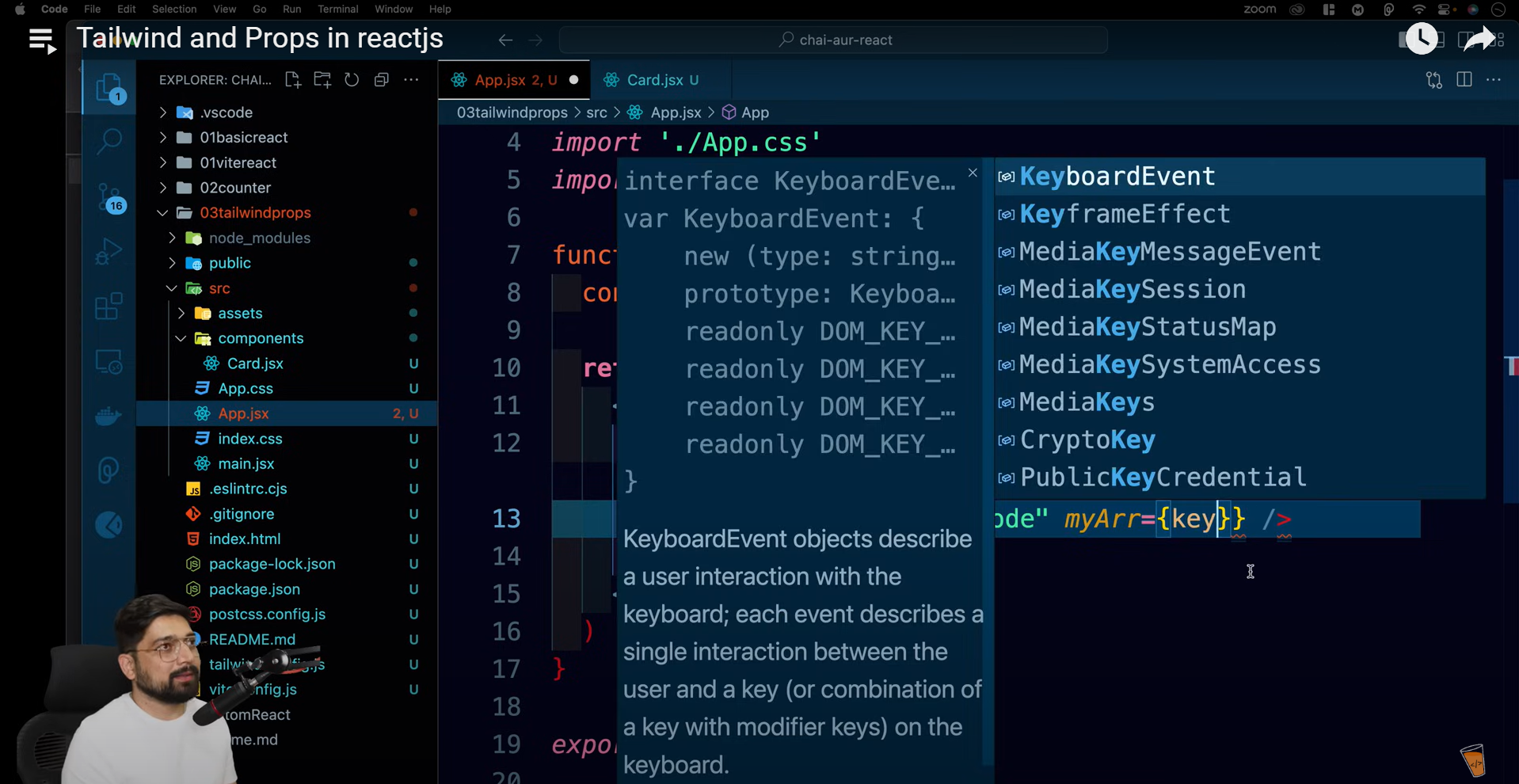Tailwind and Props in ReactJS | Chai aur react tutorial #7 Summary
 Vishesh Gupta
Vishesh Gupta
In this video Watch - Chai aur react #7 , I learned how to configure Tailwind CSS in a React project and how to use props effectively. Here's a breakdown:
Configuring Tailwind:
- The video starts by showing how to configure Tailwind CSS in a React project using Vite as the bundler. The steps are simple: follow the Tailwind official documentation, select the Vite configuration, and then verify by using Tailwind class names in your React project. When you see the styling changes, you know that Tailwind has been correctly set up.
Using Tailwind:
- Once configured, Tailwind is easy to use as it relies on class names to apply styles. We practiced by adding some class names to elements and then explored Dev-UI, a website that provides pre-built components. We imported a card component from Dev-UI to our project to explore reusable components.
Component Structure in React:
- Instead of separating HTML, CSS, and JavaScript into separate files (as in traditional development), React encourages structuring code by function. This means bundling all relevant logic (JSX, CSS, etc.) into a single component file. In this case, we created a
Cardcomponent, placed it in acomponentsfolder, and then imported it intoApp.jsx.
- Instead of separating HTML, CSS, and JavaScript into separate files (as in traditional development), React encourages structuring code by function. This means bundling all relevant logic (JSX, CSS, etc.) into a single component file. In this case, we created a
Introduction to Props:
Props (short for properties) allow components to accept dynamic data. For example, we wanted each card to display different names. Using props, we passed a title to the
Cardcomponent. Inside theCard, we accessed the prop in two ways:Using
props.titlenotation.Destructuring the prop (preferred way):
const { title } = props.
Default Props:
- If a prop is not passed, we learned how to set a default value. This prevents errors when developers forget to provide a prop. We did this by setting the default value while destructuring:
const { title = "Default Title" } = props.
- If a prop is not passed, we learned how to set a default value. This prevents errors when developers forget to provide a prop. We did this by setting the default value while destructuring:
Best Practices:
Components and filenames should start with a capital letter.
If a file contains JSX code, it should have a
.jsxextension.
Key Takeaways:
Tailwind CSS: Easy to configure and use in React by following the official documentation.
Props: Allow dynamic data handling in components and can be destructured for cleaner code.
Default Props: Help avoid errors when props are missing.
Component Structure: In React, structure your files based on functionality rather than separating HTML, CSS, and JavaScript.
Subscribe to my newsletter
Read articles from Vishesh Gupta directly inside your inbox. Subscribe to the newsletter, and don't miss out.
Written by
